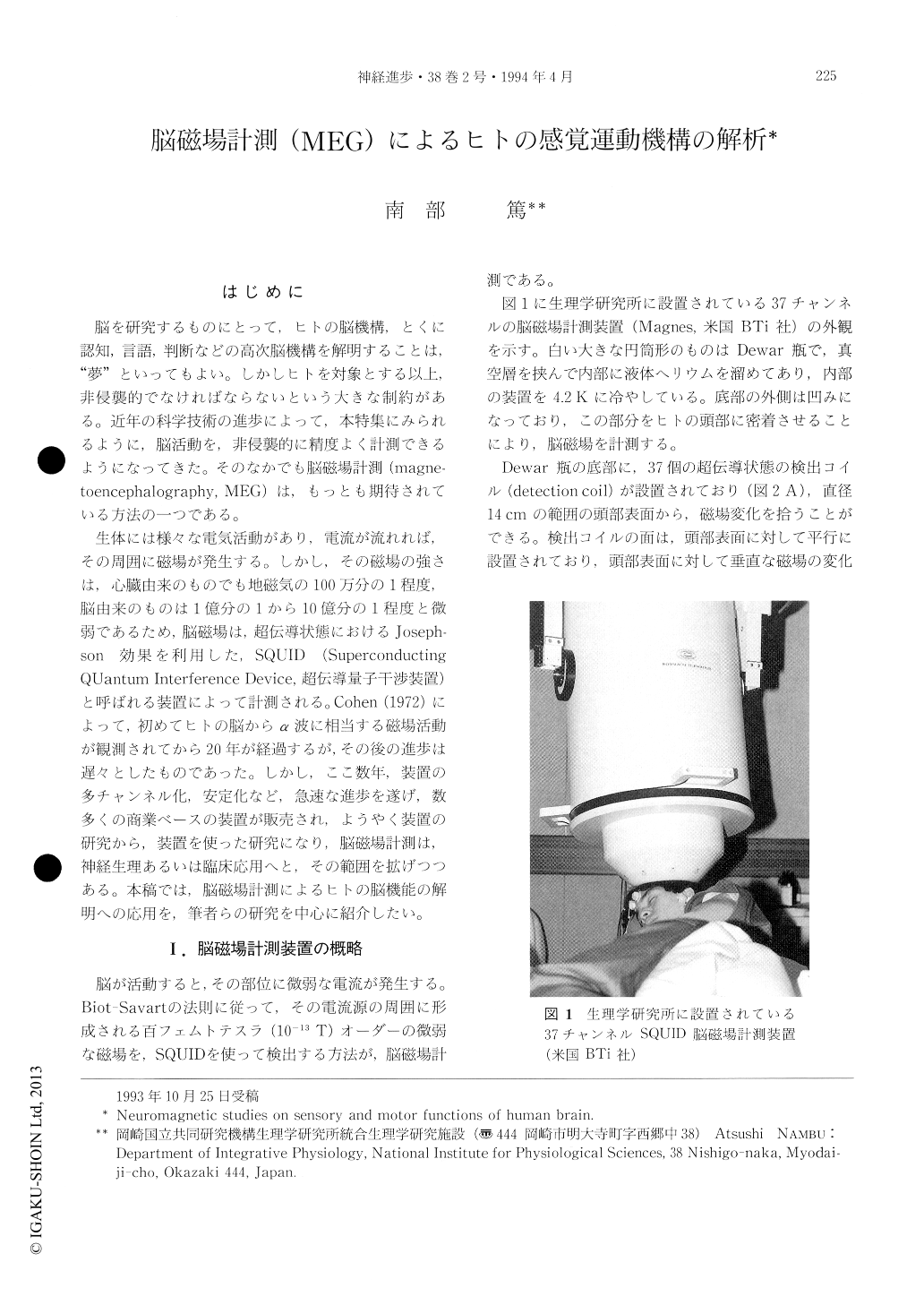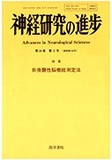Japanese
English
- 有料閲覧
- Abstract 文献概要
- 1ページ目 Look Inside
はじめに
脳を研究するものにとって,ヒトの脳機構,とくに認知,言語,判断などの高次脳機構を解明することは,“夢”といってもよい。しかしヒトを対象とする以上,非侵襲的でなければならないという大きな制約がある。近年の科学技術の進歩によって,本特集にみられるように,脳活動を,非侵襲的に精度よく計測できるようになってきた。そのなかでも脳磁場計測(magnetoencephalography,MEG)は,もっとも期待されている方法の一つである。
生体には様々な電気活動があり,電流が流れればその周囲に磁場が発生する。しかし,その磁場の強さは,心臓由来のものでも地磁気の100万分の1程度,脳由来のものは1億分の1から10億分の1程度と微弱であるため,脳磁場は,超伝導状態におけるJosephson効果を利用した,SQUID(Superconducting QUantum Interference Device,超伝導量子干渉装置)と呼ばれる装置によって計測される。Cohen(1972)によって,初めてヒトの脳からα波に相当する磁場活動が観測されてから20年が経過するが,その後の進歩は遅々としたものであった。
A non-invasive technique, magnetoencephalography (MEG) measures the magnetic fields originating mainly from the intracellular current flow through the apical dendrites of cortical pyramidal neurons, which is caused by excitatory synaptic inputs. In this article, I will review our recent MEG studies on human subjects focusing on the sensory, motor and integrative brain functions.
(1) Cerebral magnetic fields elicited by the electrical stimulation of the median nerve were recorded. Responses at a peak latency of 20 ms and 60 ms were generated in the primary somatosensory cortex (SI) over the contralateral scalp.

Copyright © 1994, Igaku-Shoin Ltd. All rights reserved.


